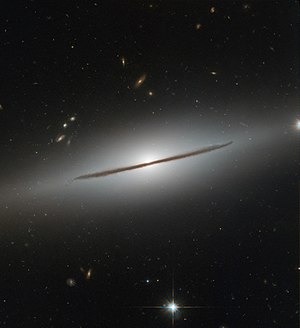Behavior of elliptical objects in general theory of relativity
Physics
DOI:
https://doi.org/10.14331/ijfps.2011.330001Keywords:
General relativity, elliptical objects, planetary orbitsAbstract
The simplest solution to Einstein's field equations is the Schwarzschild solution. This solution is not able to describe any non-spherical shaped objects. Some stars and galaxies are ellipsoidal. Consequently, the gravitational field around these objects should be different in comparison with the spherical form. This paper is considering a new line element so that we are able to construct not only spherical objects but also we are able to explain an ellipsoidal object too. This new line element is more accurate and complete than the Schwarzschild line element. In this research, we see that the Schwarzschild line element and its solution is only a part of the whole work, which we have done. For more consideration, we applied this metric to an arbitrary object in the next step. Moreover, we used this line element for the solution of a planetary orbit of an ellipsoid planet by using Einstein’s field equations. These equations used for the exterior solution of an ellipsoidal celestial object.
Downloads
References
Chandrasekhar S (1983). The Mathematical Theory of Black Holes, Claredon Press, Oxford. Oxford University Press, New York.
Einstein A (1916). On the general theory of relativity, Annalen der Physik. 49:769–822.
Hooft H (2009). Introduction to the theory of black holes. Utrecht University press.
Landau LD, Lifshitz EM (1987). The classical Theory of Relativity. Volume 2, Pergamon Press.
Nikouravan B (2001). Gravitational field of an Ellipsoidal star in General Relativity and its Various Applications. PhD
dissertation, University of Mumbai, Mumbai, India.
Nikouravan B (2009). Calculation of Ricci Tensors by Mathematica,V5.1. IJPS.4(12):818–823.
Nikouravan B (2011). Approximate Kerr Like Interior and Exterior Solutions for a Very Slowly Rotating Star of Perfect
Fluid. IJPS. 6(1): 93-97.
Nikouravan B (2011). Schwarzschild-like solution for ellipsoidal celestial objects. IJPS, Vol. 6(6), pp. 1426-1430.
Parry M, Domina ES (1961). Field theory handbook , Including coordinate systems. Springer –Verlac press.
Ramsey AS (1961). An introduction to the theory of Newtonian attraction, Cambridge Press. 176-178.
Roger L Davies (2006). Elliptical Galaxies, IOP publishing Ltd.
Schwarzschild K (1916). On the Gravitational Field of a Point-Mass, According to Einstein's Theory, (English
translation), The Abraham Zelmanov Journal. 1: 10-19.
Wolfgang R (2006). Relativity special, General, and Cosmological. Oxford University press.
Zsigrai J (2008). Ellipsoidal shapes in general relativity: general definitions and an application. Hiroshima University,
Higashi-Hiroshima 739-8526.

Published
How to Cite
Issue
Section
License
Copyright (c) 2011 International Journal of Fundamental Physical Science

This work is licensed under a Creative Commons Attribution 4.0 International License.












